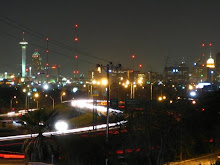Travis wrote, "I regret that the Methodist church, which, with its excellent itinerant system, has hitherto sent pioneers of the Gospel into almost every destitute portion of the globe, should have neglected so long this interesting country." He asked that five Methodist missionaries be sent to Texas. Travis was killed 7 months later, serving as commander at the Battle of the Alamo. Texas independence soon followed and the Methodists in the northeast sent three volunteers to start the Texas Mission of the Mississippi Conference and steady growth of Methodism began.
In 1846, Rev. DeVilbiss received his appointment to the San Antonio Mission Station to organize a church. He moved to San Antonio and, finding no convenient house available in the city, rented a small house seven miles down the San Antonio River. He taught in a small school to earn extra funds while getting the mission started in the city. He arranged for regular use of the Court House on the east side of Main Plaza as a place of worship and he built the pulpit and seats used in these services. DeVilbiss preached regularly and often had to contend with the noise of the people who gathered on the plaza to engage in cockfighting.
This congregation who met in 1846 was the beginning of the community of faith that grew into Travis Park United Methodist Church.
http://www.travispark.org/templates/System/details.asp?id=42710&PID=760730















